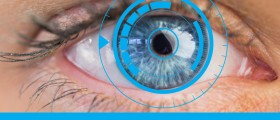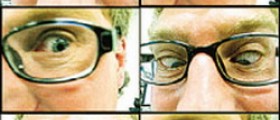
What is a hole in the retina?
This is a a defect in thecentral part of the retina. In the eye, the lens and the corneadirect and focus the light that entered it from the outside world andproject it onto the retina. Retina is made of seven layers of cellswhich is to the eye what a sensor is to digital camera, as itprocesses the light and transforms it into neural impulses that willbe decoded in vision in the brain. A hole in retina is a hole in thecentral part of it, area known as the macula, which is placed againstthe back of the eye eye and is responsible for sharp and detailedvision.
Symptoms
Initial stages of hole in theretina can be recognized as appearance of flashes, blurred vision,foggy vision and eye floaters and are usually noticeable in themorning. It is best to seek professional help as soon as you noticethese symptoms. Possible symptoms of hole in retina of eyes areblurred vision and blind spot in the central part of the eyes whichmake doing even simple tasks difficult.
Causes
Exact mechanism of appearanceof the hole in the retina is still unknown. Some of the suspectedcauses of appearance of the hole in retina are separation of thevitreous body, diabetes that affected the eye, short sightedness,detached retina, and severe eye injury by trauma or similar.
Diagnosis
Diagnosis includes testsfocused on examination of dilated retina, and eventually thefluorescein angiogram test, which includes injection of nontoxicfluorescent dye in the bloodstream and photographing of blood vesselsin the back of the eyes.
Treatment
The treatment for hole inretina is nowadays done by a form of micro surgery, specificallyvitrectomy surgery. In this type of surgery, the ophthalmologist usesvery small (micro) instruments. Procedure involves removal of thejelly that covers the macula and injection of special gas bubbles inits place. These bubbles will dissolve with time. The catch with thisprocedure is that the patient has to maintain a downward faceposition for at least a fortnight after the surgery. Success of thesurgery depends on this.
Since, the gas bubble is placed at the backof the eyes, it is of utmost importance to maintain a face downpositioning. Help of family members and professional caretakers willbe necessary during this time. After 2 to 3 weeks after the surgery,the patient may begin to maintain an upright face position. It takessix to eight weeks for the bubbles to dissolve.
Surgery is performedunder anesthesia and a stay in the hospital will last a few daysafter the procedure. Eyes are checked for recommending appropriateglasses once the gas bubbles dissolve. Possible risks of thisprocedure include bleeding, loss of side vision loss and formation ofthe cataract.

















Your thoughts on this
Loading...